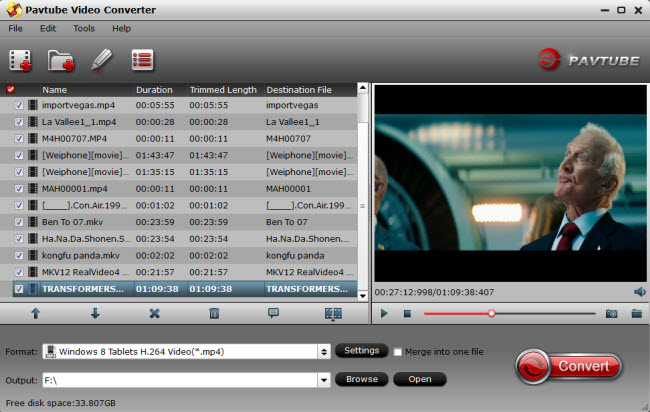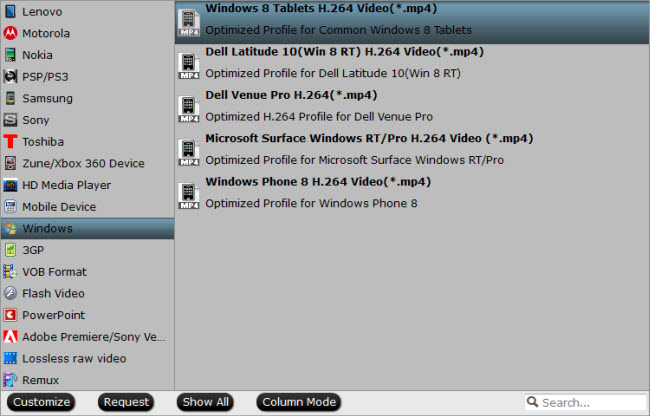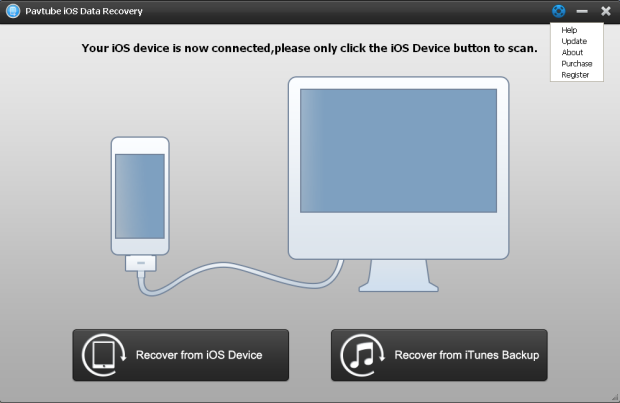Have heard about Toughpad 4K Tablet- the world's First' 4K Tablet? Now getting all 4K Videos & Movies playback on Toughpad 4K Tablet Tablet becomes reality. Amazing, isn't it? Here's how-to.Ever since I saw the Panasonic Toughpad 4K Tablet preview at NAB last year, I've been looking forward to the public availability of this amazing PC. A 20” business-rugged tablet with 4K Ultra-HD+ screen resolution and Windows 8.1 is a game changer for photographers, video professionals, architects, artists, and enthusiasts who demand the most out of their technology.

Imagine being able to watch 4K video footage a full resolution on a tablet with screen real estate to spare! Consider being able to see almost all of your DSLR image area at 100% magnification. You can go with the Panasonic Toughpad 4K Tablet.
4K Ultra HD is a new class of high-definition resolution offering unprecedented picture clarity and detail. And the 4K refers to a new standard of screen technology that sports roughly 4,000 horizontal pixels. And then it comes the question: "How to freely watch 4K Ultra HD videos on on Toughpad 4K Tablet (Windows 8.1 Pro) without limitation?"
As we konw, via internet or Netfix, you can easily transfer you 4k videos to Toughpad 4K Tablet for playback, but Toughpad 4K Tablet doesn't support all the types to loading successfully, then using and external tool is the first step if you want to get any 4K Videos & Movies playable on Toughpad 4K Tablet (Windows 8.1 Pro).
Luckily 4K Video Converter comes up to help you! Featured with the most advanced converting technology, Pavtube Video Converter provides the most reliable and professional 4K solutions to all format issues including 4K camcorders, 4K TVs and 4K movies, etc. The Mac version is 4K Video Converter for Mac.
How to convert all kinds of video files to Toughpad 4K Tablet supported format?
Free Download Pavtube Video Converter:
Step 1: Add video files.
Install and launch it the best Toughpad 4K Tablet Video Converter.
Click “Add Video” to load video source. The Toughpad 4K Tablet converter converter supports video formats and codec like H.264, MPEG-4, MPEG-2, Xvid, TS, AVI, MP4, WMV, MKV, MOV, TOD, M2TS, MTS, MOD, VOB, TiVo and some other codecs.

Step 2: Select output format for converting video to Toughpad 4K Tablet.
To convert all kinds of video for Toughpad 4K Tablet, click the dropdown list of “Format” and set a Toughpad 4K Tablet supported format.
We recommend you to choose “Windows >Windows 8 Tablet H.264 Video(*.mp4)”. The output videos could fit on Google Toughpad 4K Tablet perfectly.

Tips: You can click “Settings” to change the video encoder, resolution, frame rate, etc. as you wish. Keep in mind that bitrate higher results in big file size, and lower visible quality loss, and vice versa. For watching movies on Toughpad 4K Tablet,1920*1080 (1080p) with 3000~4000kbps is just all right.
Step 3: Convert 4k unsupported MKV, AVI, WMV, MP4, M2TS, VOB video to Toughpad 4K Tablet supported format.
Click “Convert” button to start convert MKV, VOB, AVI, Tivo, MPG, WMV, FLV/F4V videos to Toughpad 4K Tablet compatible mp4 format. After conversion completes click the “Open” button to find the converted files. Now the converted videos can be put onto Toughpad 4K Tablet for entertainment.
Don't know the way transferring videos and music from PC to Toughpad 4K Windows 8.1 Pro Tablet, refer to the guide here.
When the videos are copied to the Toughpad 4k Standard/Toughpad 4k Performance, you can disconnect your 4k tablet from PC.
Well, this Video Converter for Toughpad 4K Tablet is the best app for you transfer the video or music in any format to Toughpad 4K Tablet compatible video audio format for viewing with the best video nad audio quality. By using video converter for Toughpad 4K Tablet tablet, you are able to play 1080p or 720p MKV, AVI, VOB, TiVo, MPG, MXF, AVCHD, FLV and etc video files to your Panasonic Toughpad 4K Tablet tablet perfectly.
Tips:
1. When Toughpad 4K Tablet refuses to play a video, it could be due to one or more of the following reasons:
Unsupported video format (e.g. *.mkv format)
Unsupported codec (e.g. AC3)
Huge file size (e.g. H.264 MP4 video of 10GB+)
High resolution (e.g. 1080p video and above)
Protections (e.g. Digital Copy movies)
2. If you want to watch DRM-protected iTunes, Amazon, Digital Copy movies on Blackberry Z10, you need DRM Removal app, in addition, I will offer a guide:
3. To rip Blu-rays, DVDs and ISO/IFO to Toughpad 4K Tablet supported formats, you may use the all-in-one package Video Converter Ultimate.
About Panasonic Toughpad 4K Tablet tablet:
Panasonic has packed 3,840 x 2,560 pixels into this tablet’s 20-inch IPS Alpha LCD screen. It is powered by an Intel Core i5 CPU, 8 GB of RAM, packs a 256 GB SSD and runs Windows 8.1. And drops are a definite possibility with the tablet weighing in at a hefty 5.3 lb (2.4 kg).
See more Toughpad 4K Tablet tablet supported video format.
From: http://open-mobile-share.com/toughpad-4k-tablet-video-solution/






































